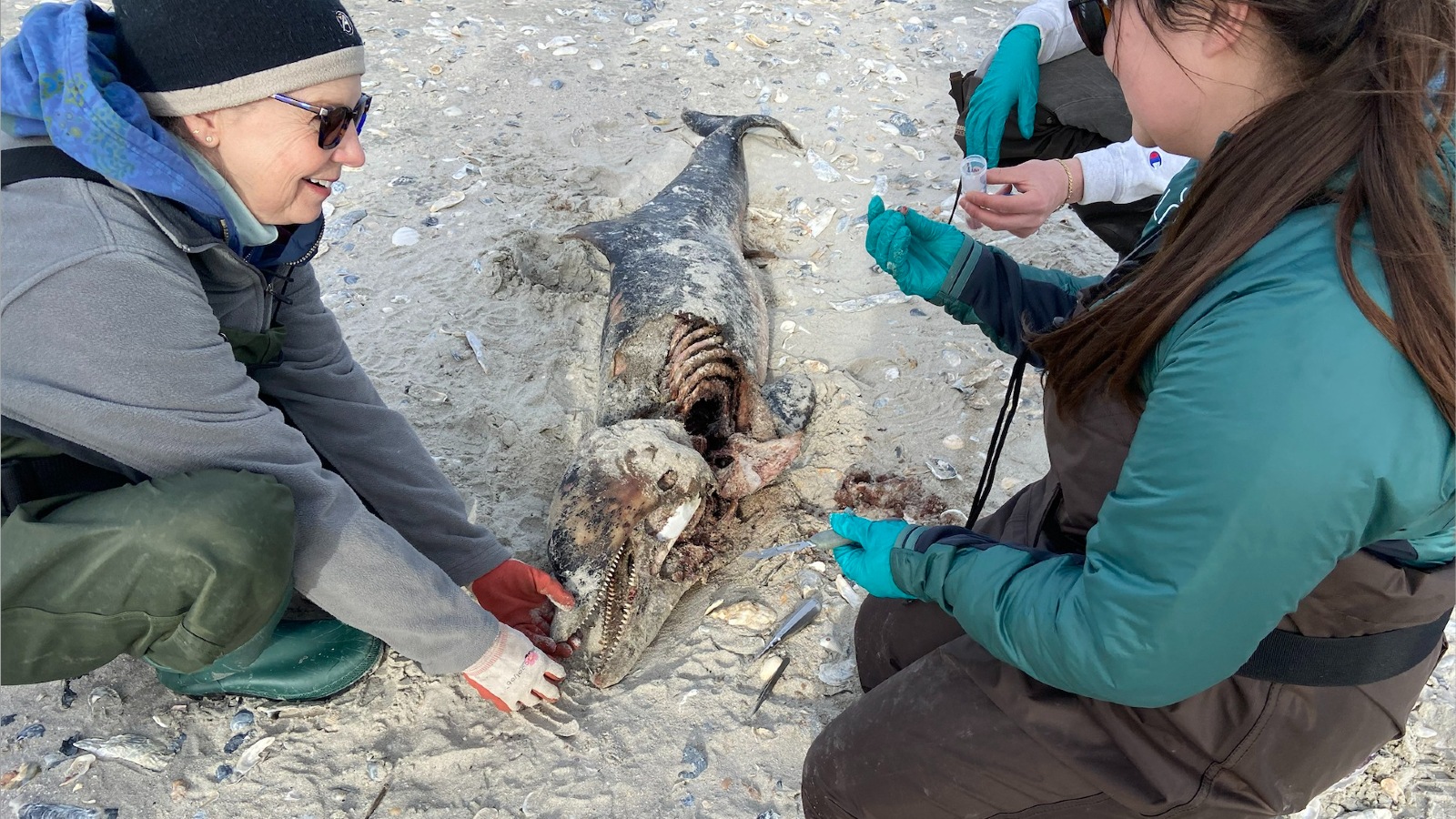Haunting 'mummified dolphin' found on US beach may have been dead for months
The highly desiccated remains of a suspected bottlenose dolphin were recently found on a beach in South Carolina after "mummifying" for weeks or even months. One expert believes the animal may have deliberately beached itself.

Beachgoers in South Carolina recently stumbled upon an eerie, skeleton-like dolphin sprawled across the sand, where it may have been slowly drying out for months. One expert suggests that the animal may have accidentally become stranded after deliberately beaching itself.
On Jan. 14, the Lowcountry Marine Mammal Network (LMMN) received a call about a "mummified dolphin" near Hilton Head Island, the organization's representatives wrote in a Facebook post. LMMN volunteer Amber Kuehn, a marine biologist and coordinator of the Hilton Head Island Sea Turtle Patrol, visited the site to measure and collect skin and teeth samples from the body, before burying the remains on the beach.
The dolphin was most likely a common bottlenose dolphin (Tursiops truncatus) and was around 8 feet (2.4 meters) long, Kuehn told Live Science in an email. It was unclear how old or what sex the dolphin was, she added.
"It wasn't actually mummified," Kuehn said. "It was simply decomposed." However, the level of decomposition was unusually high, she added.
Kuehn believes the carcass could be several weeks old. However, Erich Hoyt, a research fellow at Whale and Dolphin Conservation (WDC) in the U.K. and author of several books on cetaceans, told Live Science that the remains could be months old.
Related: 10 creatures that washed up on the world's beaches in 2023
The corpse appears to have completely dried out due to its dry surroundings and being continually exposed to the sun, Hoyt said. But it is strange that the body desiccated to this extent while remaining fully intact, he added.
Get the world’s most fascinating discoveries delivered straight to your inbox.
Normally, remains like these would be picked clean by scavengers. For example, the day before this corpse was found (Jan. 13), LMMN volunteers were called to another bottlenose dolphin body near Botany Bay on Edisto Island. This corpse appeared to be similarly decomposed, but it had already been heavily scavenged.
The mummified dolphin may have dried out somewhere else before washing up at Hilton Head Island, LMMN representatives wrote. But this is hard to prove.
However, an interesting bottlenose dolphin behavior could explain how the two dolphins ended up on their respective beaches.
Small groups of bottlenose dolphins in South Carolina have previously been seen collectively surging onto the shore to drag small fish onto land in their wake, enabling them to pick off the helpless prey before rolling back into the water, Hoyt said. But if an individual lunges too far, it is possible they could become stranded and die before eventually desiccating, he added.
But this is just one theory, and there is "no evidence of this having happened" in these recent cases, Hoyt said.

Harry is a U.K.-based senior staff writer at Live Science. He studied marine biology at the University of Exeter before training to become a journalist. He covers a wide range of topics including space exploration, planetary science, space weather, climate change, animal behavior and paleontology. His recent work on the solar maximum won "best space submission" at the 2024 Aerospace Media Awards and was shortlisted in the "top scoop" category at the NCTJ Awards for Excellence in 2023. He also writes Live Science's weekly Earth from space series.



